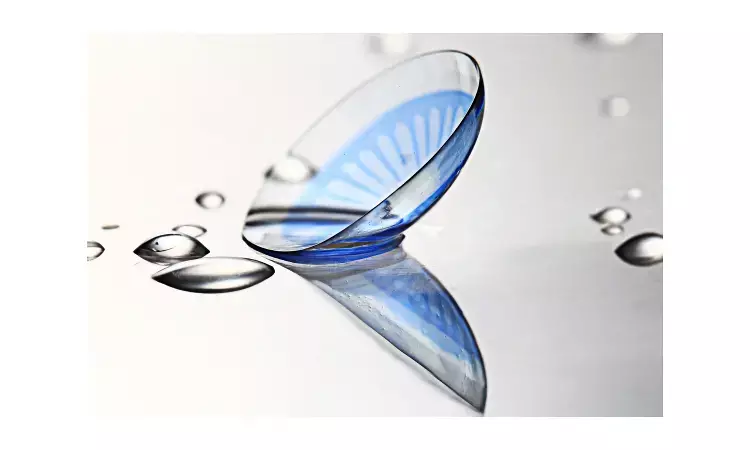- Home
- Medical news & Guidelines
- Anesthesiology
- Cardiology and CTVS
- Critical Care
- Dentistry
- Dermatology
- Diabetes and Endocrinology
- ENT
- Gastroenterology
- Medicine
- Nephrology
- Neurology
- Obstretics-Gynaecology
- Oncology
- Ophthalmology
- Orthopaedics
- Pediatrics-Neonatology
- Psychiatry
- Pulmonology
- Radiology
- Surgery
- Urology
- Laboratory Medicine
- Diet
- Nursing
- Paramedical
- Physiotherapy
- Health news
- Fact Check
- Bone Health Fact Check
- Brain Health Fact Check
- Cancer Related Fact Check
- Child Care Fact Check
- Dental and oral health fact check
- Diabetes and metabolic health fact check
- Diet and Nutrition Fact Check
- Eye and ENT Care Fact Check
- Fitness fact check
- Gut health fact check
- Heart health fact check
- Kidney health fact check
- Medical education fact check
- Men's health fact check
- Respiratory fact check
- Skin and hair care fact check
- Vaccine and Immunization fact check
- Women's health fact check
- AYUSH
- State News
- Andaman and Nicobar Islands
- Andhra Pradesh
- Arunachal Pradesh
- Assam
- Bihar
- Chandigarh
- Chattisgarh
- Dadra and Nagar Haveli
- Daman and Diu
- Delhi
- Goa
- Gujarat
- Haryana
- Himachal Pradesh
- Jammu & Kashmir
- Jharkhand
- Karnataka
- Kerala
- Ladakh
- Lakshadweep
- Madhya Pradesh
- Maharashtra
- Manipur
- Meghalaya
- Mizoram
- Nagaland
- Odisha
- Puducherry
- Punjab
- Rajasthan
- Sikkim
- Tamil Nadu
- Telangana
- Tripura
- Uttar Pradesh
- Uttrakhand
- West Bengal
- Medical Education
- Industry
Trifocal intraocular lenses have good outcomes even after previous photorefractive surgery

Recent advances in microsurgery and the latest developments in intraocular lenses (IOLs) have allowed surgeons to achieve more accurate and predictable postoperative refractive results. In recent years, the range of multifocal lenses has increased significantly. These were developed to contain more than one lens power in order to provide a wider range of clear vision that is, at distance, intermediate and near vision.
A retrospective study by Cobo-Soriano and team revealed that Trifocal IOL implantation after photorefractive surgery in eyes which was previously treated with myopic ablation achieved good visual outcomes but less predictability in the high myopia subgroup. Eyes with a previous hyperopic corneal ablation achieved excellent precision but worse visual and safety outcomes in the high hyperopia subgroup.
The findings of the study are published in Journal of Cataract & Refractive Surgery.
The objective of the study was to evaluate the visual and refractive outcomes of trifocal intraocular lens (IOL) implantation in eyes previously treated with myopic and hyperopic corneal refractive laser surgery.
The study was Retrospective comparative case series. The series was divided into 2 groups according to the type of corneal laser refraction (myopic and hyperopic). The main visual and refractive outcome measures included corrected distance visual acuity (CDVA) and uncorrected distance and near visual acuity, safety, efficacy, and predictability. The secondary outcome measures were percentage of enhancement and Nd:YAG capsulotomy and influence of prelaser magnitude of myopia and hyperopia on the outcome of trifocal IOL implantation.
The results of the study were
• The sample included 868 eyes (543 patients): myopic, n = 319 eyes (36.7%); and hyperopic, n = 549 eyes (63.2%).
• Three months postoperatively, visual outcomes were poorer in the hyperopic group than those in the myopic group for mean CDVA (0.06 ± 0.05 vs 0.04 ± 0.04, P < .01) and safety (21% vs 12% of CDVA line loss, P < .05) outcomes.
• However, precision outcomes were worse in the myopic group than those in the hyperopic group, with a mean spherical equivalent of −0.38 ± 0.3 vs −0.17 ± 0.3 (P < .01).
• Stratification by magnitude of primary laser treatment revealed poorer visual and safety results in the high hyperopia subgroup (>+3.0 diopters [D]) and poorer precision in the high myopia subgroup (<−5.0 D).
Soriano and team concluded that "Trifocal IOL implantation after photorefractive surgery in eyes previously treated with myopic ablation achieved good visual outcomes but less predictability in the high myopia subgroup. However, eyes with a previous hyperopic corneal ablation achieved excellent precision but worse visual and safety outcomes in the high hyperopia subgroup."
Reference: doi: 10.1097/j.jcrs.0000000000000637
Medical Dialogues consists of a team of passionate medical/scientific writers, led by doctors and healthcare researchers. Our team efforts to bring you updated and timely news about the important happenings of the medical and healthcare sector. Our editorial team can be reached at editorial@medicaldialogues.in.
Dr Kamal Kant Kohli-MBBS, DTCD- a chest specialist with more than 30 years of practice and a flair for writing clinical articles, Dr Kamal Kant Kohli joined Medical Dialogues as a Chief Editor of Medical News. Besides writing articles, as an editor, he proofreads and verifies all the medical content published on Medical Dialogues including those coming from journals, studies,medical conferences,guidelines etc. Email: drkohli@medicaldialogues.in. Contact no. 011-43720751


